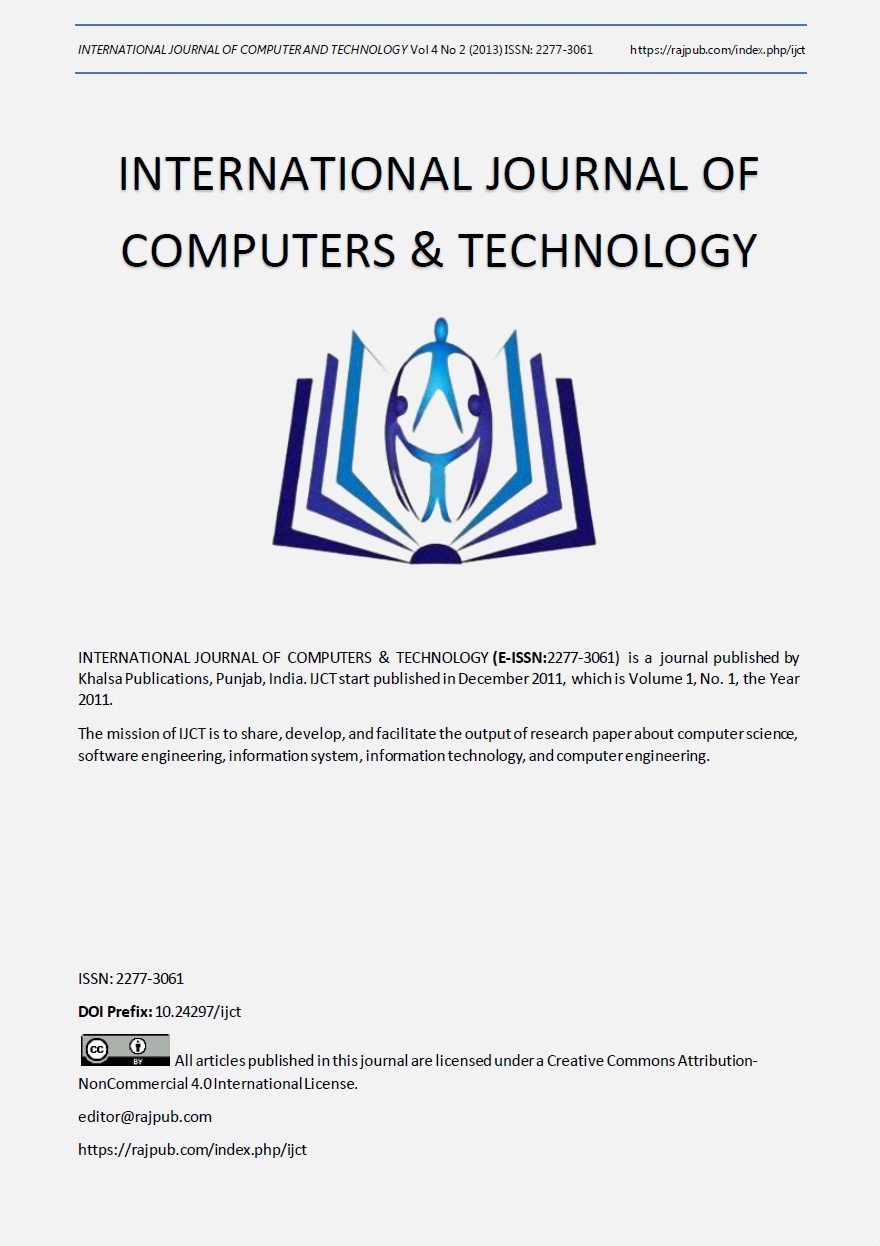ANALYSIS OF SOM & SOFM TECHNIQUES USED IN SATELLITE IMAGERY
DOI:
https://doi.org/10.24297/ijct.v4i2C1.4181Keywords:
SOFM, Satellite Imagery, Artificial Neural Network, Supervised Learning and Unsupervised learning.Abstract
This paper describes the introduction of Supervised and Unsupervised Techniques with the comparison of SOFM (Self Organized Feature Map) used for Satellite Imagery. In this we have explained the way of spatial and temporal changes detection used in forecasting in satellite imagery. Forecasting is based on time series of images using Artificial Neural Network. Recently neural networks have gained a lot of interest in time series prediction due to their ability to learn effectively nonlinear dependencies from large volume of possibly noisy data with a learning algorithm. Unsupervised neural networks reveal useful information from the temporal sequence and they reported power in cluster analysis and dimensionality reduction. In unsupervised learning, no pre classification and pre labeling of the input data is needed. SOFM is one of the unsupervised neural network used for time series prediction .In time series prediction the goal is to construct a model that can predict the future of the measured process under interest. There are various approaches to time series prediction that have been used over the years. It is a research area having application in diverse fields like weather forecasting, speech recognition, remote sensing. Advances in remote sensing technology and availability of high resolution images in recent years have motivated many researchers to study patterns in the images for the purpose of trend analysisDownloads
Download data is not yet available.
Downloads
Published
2018-06-21
How to Cite
Sharma, R., & Dubey, S. K. (2018). ANALYSIS OF SOM & SOFM TECHNIQUES USED IN SATELLITE IMAGERY. INTERNATIONAL JOURNAL OF COMPUTERS &Amp; TECHNOLOGY, 4(2), 563–565. https://doi.org/10.24297/ijct.v4i2C1.4181
Issue
Section
Research Articles









